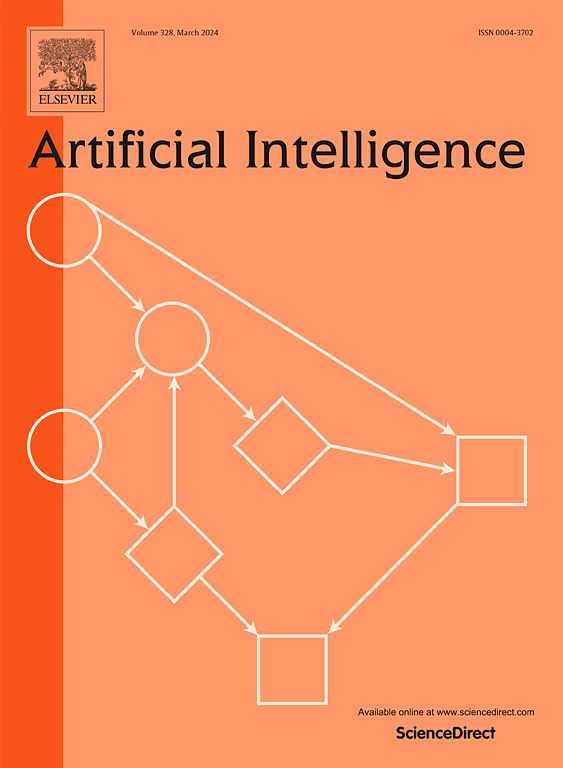Drawing a map of elections
IF 4.6
2区 计算机科学
Q1 COMPUTER SCIENCE, ARTIFICIAL INTELLIGENCE
引用次数: 0
Abstract
Our main contribution is the introduction of the map of elections framework. A map of elections consists of three main elements: (1) a dataset of elections (i.e., collections of ordinal votes over given sets of candidates), (2) a way of measuring similarities between these elections, and (3) a representation of the elections in the 2D Euclidean space as points, so that the more similar two elections are, the closer are their points. In our maps, we mostly focus on datasets of synthetic elections, but we also show an example of a map over real-life ones. To measure similarities, we would have preferred to use, e.g., the isomorphic swap distance, but this is infeasible due to its high computational complexity. Hence, we propose polynomial-time computable positionwise distance and use it instead. Regarding the representations in 2D Euclidean space, we mostly use the Kamada-Kawai algorithm, but we also show two alternatives. We develop the necessary theoretical results to form our maps and argue experimentally that they are accurate and credible. Further, we show how coloring the elections in a map according to various criteria helps in analyzing results of a number of experiments. In particular, we show colorings according to the scores of winning candidates or committees, running times of ILP-based winner determination algorithms, and approximation ratios achieved by particular algorithms.
绘制选举地图
我们的主要贡献是采用了选举框架图。选举地图由三个主要元素组成:(1)选举数据集(即给定候选人集合的顺序选票集合),(2)测量这些选举之间相似性的方法,以及(3)在二维欧几里得空间中以点表示选举,因此两个选举越相似,它们的点就越接近。在我们的地图中,我们主要关注合成选举的数据集,但我们也展示了一个真实选举地图的例子。为了度量相似性,我们更倾向于使用,例如同构交换距离,但由于其高计算复杂度,这是不可行的。因此,我们提出了多项式时间可计算的位置距离,并用它来代替。对于二维欧几里得空间的表示,我们主要使用Kamada-Kawai算法,但我们也给出了两种替代方法。我们发展必要的理论结果来形成我们的地图,并通过实验证明它们是准确和可信的。此外,我们还展示了如何根据各种标准在地图中为选举上色有助于分析许多实验的结果。特别是,我们根据获胜候选人或委员会的分数,基于ilp的获胜者确定算法的运行时间以及特定算法实现的近似比率显示着色。
本文章由计算机程序翻译,如有差异,请以英文原文为准。
求助全文
约1分钟内获得全文
求助全文
来源期刊

Artificial Intelligence
工程技术-计算机:人工智能
CiteScore
11.20
自引率
1.40%
发文量
118
审稿时长
8 months
期刊介绍:
The Journal of Artificial Intelligence (AIJ) welcomes papers covering a broad spectrum of AI topics, including cognition, automated reasoning, computer vision, machine learning, and more. Papers should demonstrate advancements in AI and propose innovative approaches to AI problems. Additionally, the journal accepts papers describing AI applications, focusing on how new methods enhance performance rather than reiterating conventional approaches. In addition to regular papers, AIJ also accepts Research Notes, Research Field Reviews, Position Papers, Book Reviews, and summary papers on AI challenges and competitions.
 求助内容:
求助内容: 应助结果提醒方式:
应助结果提醒方式:


